Croatia
Salona
Salona Ancient Site

Summary
The ruins of the ancient city of Salona are one of the most important archaeological sites in Croatia. Dating back to the 2nd century BCE the city was the capital of the Roman province of Dalmatia and at its height, had a population of 60,000 people, making it one of the largest cities in the Roman empire.
|
The ruins of the ancient city of Salona are situated in the Jadro river delta six miles to the northwest of Split and is one of the most important archaeological sites in Croatia.
Dating back to the 2nd century BCE the city was initially settled by the Illyrian Dalmati tribe who lived there until they were followed by the Greeks. Due to its importance as a military centre the city was surrounded by walls. During this time the Romans mounted a campaign to conquer the area and it alternated between Greek and Roman control. It finally became a Roman colony during the reign of Emperor Augustus sometime between 40 and 33 BCE when it became the capital of the Roman province of Dalmatia with the name of Colonia Martia Ivlia Salona. It then started to expand due to the many Roman war veterans moving there.
It continued to expand due to its trading position during the first century AD, and it was fortified with strong walls and towers. As with all Roman towns a Forum was erected and located next to that a theatre which had a capacity for 3500 people. In the 2nd century, an amphitheatre with a capacity for 17,000 spectators was built. It is believed that, at its height, it had a population of 60,000 people, making it one of the largest cities in the Roman empire.
In 284 AD Diocletian became emperor, he was from Salona and chose to build a palace nearby for his retirement. He was therefore keen to see the expansion of the city. Salona was at that time a very cosmopolitan city with a number of religions apart from the worship of the Roman gods. These were accepted, although Christianity came under vigorous persecution by Diocletian in what was known as the Diocletianic or Great Persecution. This was the last and most severe persecution of Christians in the Roman Empire when in 303, a series of edicts were issued rescinding Christians' legal rights and demanding that they comply with traditional religious practices, something that was to last until 311, resulting in many Christians being martyred. At the end of the 4th century, a memorial chapel was built to contain the tombs of Bishop Domnius and others who had been martyred. This led to other Christians wishing to be buried with them so other graves and sarcophagi were placed there.
In the middle of the 5th century the area was invaded by the Goths and Huns and in 493 Salona was ceded to the Gothic king Theodoric. It was returned to Rome in 535 but in 614 the city was destroyed by the Slavs and Avars, resulting in its residents fleeing to the islands in the Adriatic and to the remains of Diocletian’s Palace in Split, where they established a new community.
On entering the site today, visitors find the remains of the Manastirine, which consists of a basilica and cemetery which are located just outside the town.
Remains here have been found that date back to the 2nd century BCE. In the 1st century AD, a Roman pagan necropolis started to develop, and many graves and cemetery plots have been found and are still to be seen.
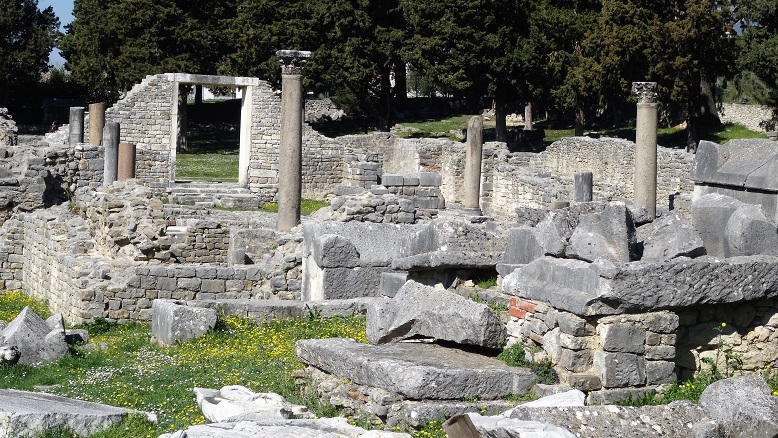
The first Christian burial was known to have taken place there was of Bishop Domnio who was executed in Salona’s amphitheatre in April 304 AD. He was buried in a tomb which led to the burial of other Christians around him. Nearly one thousand sarcophagi have been discovered in this cemetery.

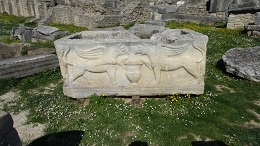
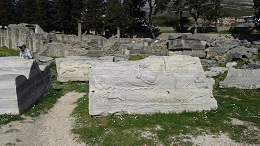
At the end of the 4th century during the German incursions, the complex was partly destroyed which led to the construction, in the 5th century, of a large three-nave basilica.
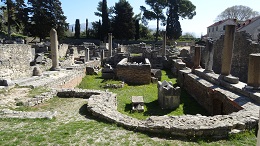
Domnio’s grave was placed in the presbytery of the basilica. Many ruins are still found around the site.
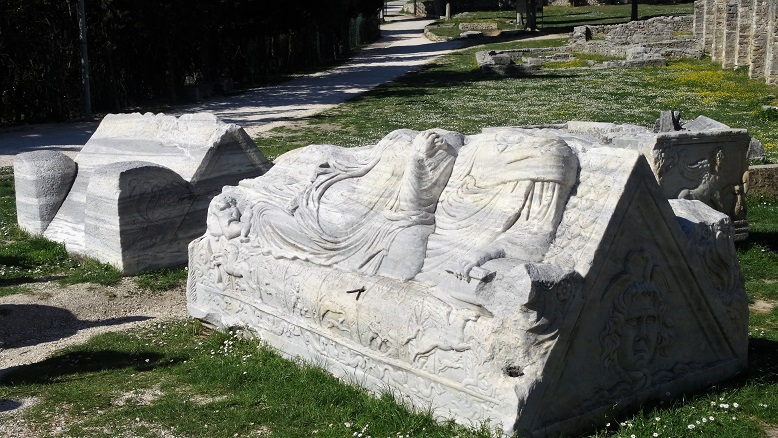
Today the site is open to the public, it contains a small museum which is housed in the Tusculum which serves as a ticket office and souvenir shop.
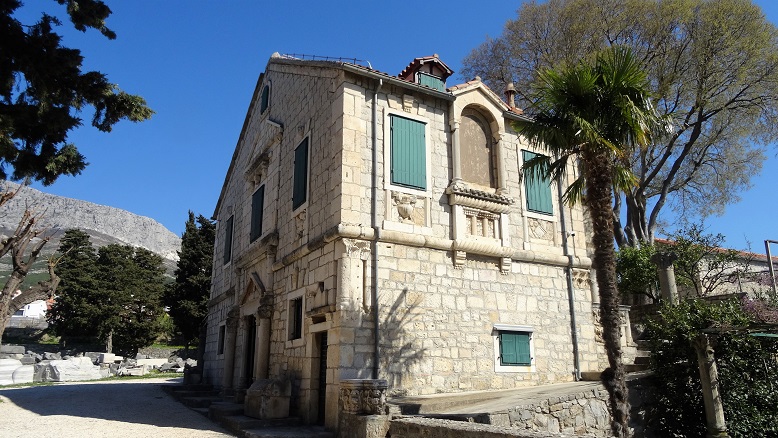
This building is the dates from the late 19th century and housed the archaeologist Frane Bulic, who is regarded as the father of Croatian Archaeology and was renowned for his work on the site. The museum does contain a few items found at the site as well as a bust of Bulic, but most items are in the Archaeological Museum at Split.
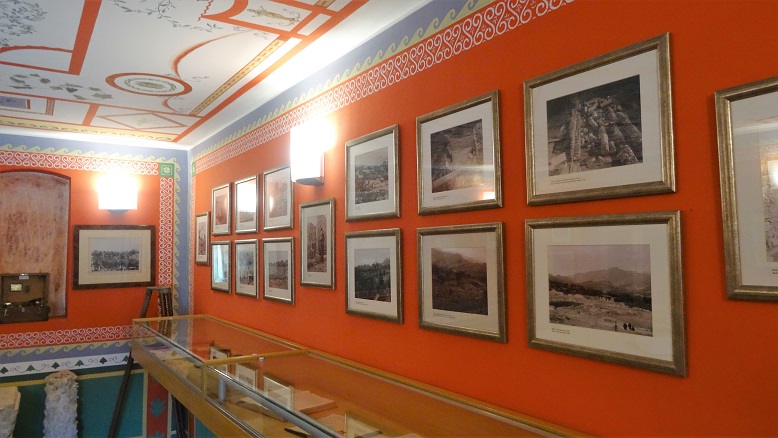
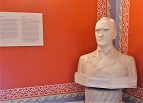
Leading from the museum is a path that takes visitors towards the old town and its fortifications which consisted of a wall and 90 towers, although. These started to be erected in 170 AD and were built over a period of several centuries. Elliptical in shape, the total circumference of the walls was approximately 4 km, varying in width from 1.9 to 2.5 metres, although little of them remain today.
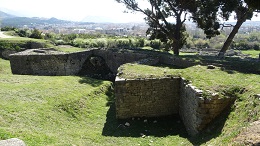
Within the town are the remains of two basilicas built and dedicated to the Christian martyrs in the 5th century. The Episcopal Centre was erected following the Edict of Milan on Religious Tolerance in 313 AD. This centre developed in the 5th century and the Bishops palace was constructed to the north of the centre.
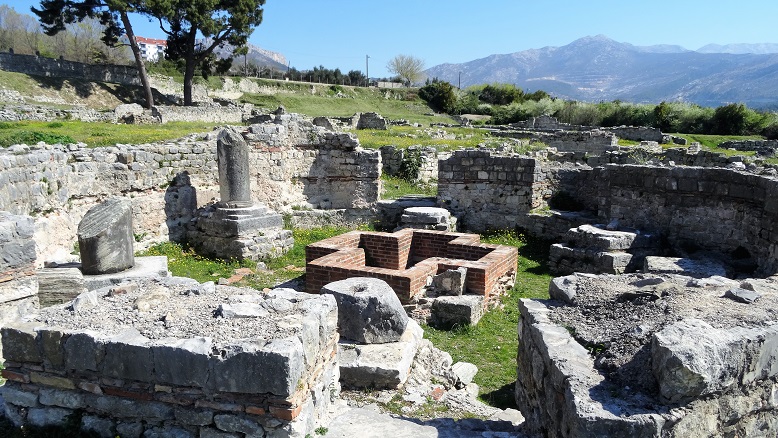
Also to be seen are the forum; a theatre; an amphitheatre; public baths; and the remains of the aqueduct.







